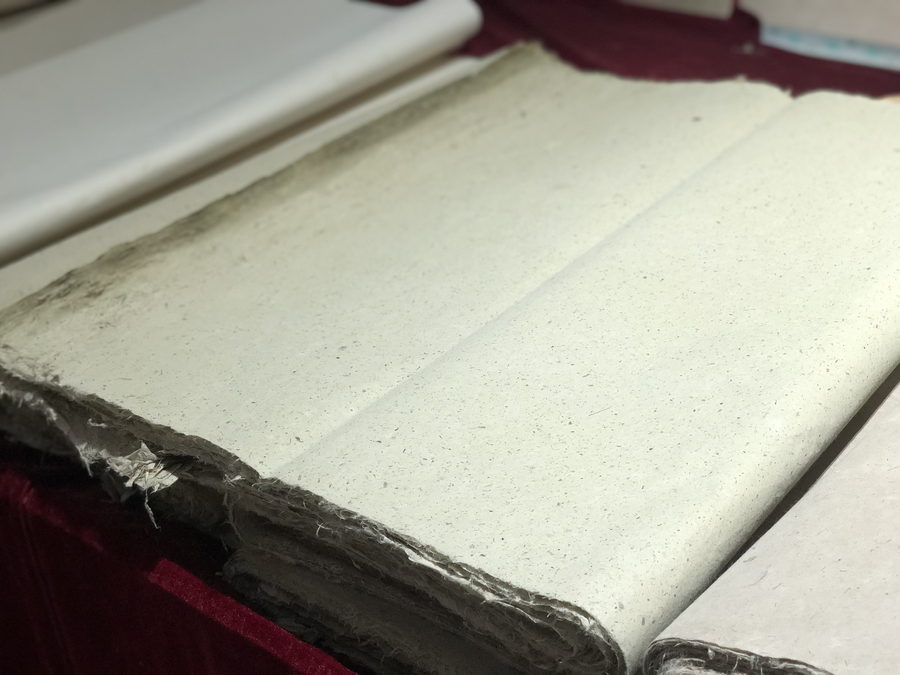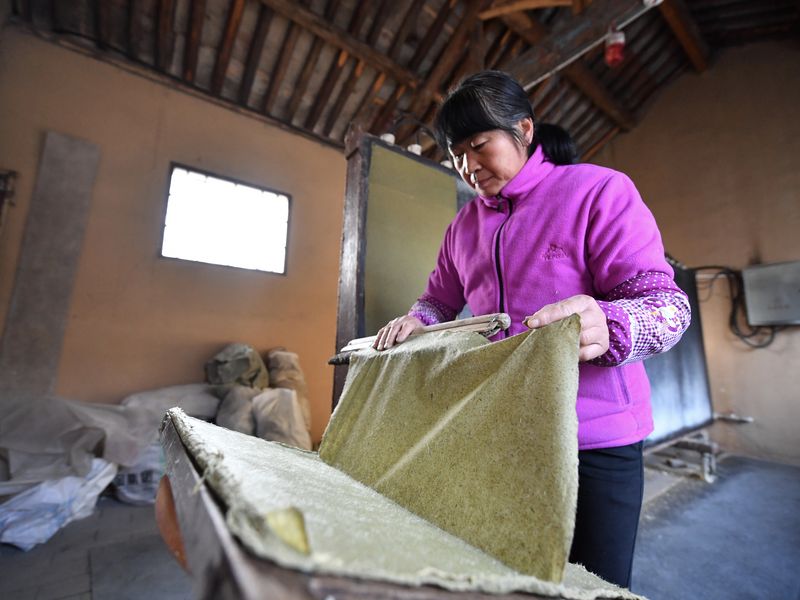
Photo taken on Dec. 6, 2019 shows the "panda poop paper" made in Qiliang village in northwest China's Shaanxi Province. (Xinhua/Xu Han)
A Chinese craftsman has developed paper out of panda waste along with mulberry bark and kiwi fruit vines after years of research.
XI'AN, Dec. 16 (Xinhua) -- Hu Guanyin, a Chinese calligraphy lover in northwest China's Shaanxi Province, was pleased with his newly received paper made from panda poop.
"It's so smooth to write on that I feel I am writing on a piece of silk," Hu said. The paper, which gives off a slight bamboo scent, is made with traditional Chinese techniques.
Liu Xiaodong, a craftsman from Qiliang village in Shaanxi, has developed paper out of panda waste along with mulberry bark and kiwi fruit vines after years of research.

Liu Xiaodong shows panda feces for making "panda poop paper" on Dec. 6, 2019. (Xinhua/Sun Zhenghao)
The paper, which is created following a process invented by Cai Lun in the Han Dynasty (202 B.C.-220 A.D.), has helped him promote the ancient craft and his village.
Qiliang village's history of papermaking dates back over 1,000 years. "It's a craft that's passed down from generation to generation," Liu said.
However, in modern times, many paper workshops are closed and the traditional techniques lost as many locals leave their hometowns for jobs in big cities.
Liu, a retired teacher, has been working to revive the ancient technique and innovate to make it popular again.
Noting the abundant bamboo fiber in the poop of pandas, Liu came up with the idea to make paper with it. He hoped that the beloved animal could help him save the dying craft.
For three years, Liu worked on realizing the idea and finally made it in 2017 after hundreds of experiments. The panda waste was collected from a nearby panda conservation center.
Workers first rinse the poop and beat down the fiber into a pulp, and then add the juice of kiwi fruit vines and stir the pulp. Finally they add the mulberry bark, screen the paper, and press and dry it.
"Each process should be strictly followed to make sure there's no mistake that will ruin the final product," Liu said.

Photo taken on Dec. 6, 2019 shows a craftswoman of Qiliang village drying the semi-finished "panda poop paper". (Xinhua/Zhang Bowen)
Several companies in China have used panda feces to make toilet paper, but Liu's product are designed as calligraphy paper.
"Calligraphy artists are usually very demanding about their paper, and the 'panda poop paper' has been well-received due to its natural color and soft texture," Liu said.
The paper is not for sale yet because of its limited production, but it has helped Liu achieve his mission of promoting the ancient craft in his village.
Many visitors to the village are curious about the paper and some even come especially for it, Liu said.
With the publicity that it brings, Liu set up a museum in the village for the traditional craft, and he is especially glad to see young people coming to visit.
"I would even pay them to learn the craft," Liu said. "I just want it to be passed down to future generations, and to revive the papermaking industry in the village." ■



